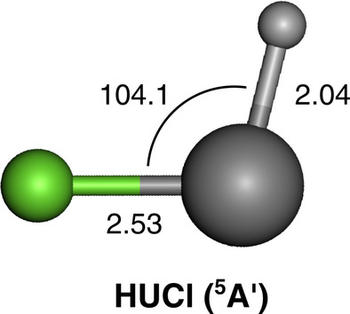Infrared Spectra of the HAnX and H2AnX2 Molecules (An=Th and U, X=Cl and Br) in Argon Matrices Supported by Electronic Structure Calculations
Lin Li, Tony Stüker, Lester Andrews, Helmut Beckers, Sebastian Riedel – 2018
Uranium and thorium hydrides are known as functional groups for ligand stabilized complexes and as isolated molecules under matrix isolation conditions. Here, the new molecular products of the reactions of laser‐ablated U and Th atoms with HCl and with HBr, namely HUCl, HUBr and HThCl, HThBr, based on their mid and far infrared spectra in solid argon, are reported. The assignment of these species is based on the close agreement between observed and calculated vibrational frequencies. The H−U and U−³⁵Cl stretching modes of HUCl were observed at 1404.6 and 323.8 cm⁻¹, respectively. Using DCl instead to form DUCl gives absorption bands at 1003.1 and 314.7 cm⁻¹. The corresponding bands of HThCl are 1483.8 (H−Th) and 1058.0 (D−Th), as well as 340.3 and 335.8 cm⁻¹ (Th−³⁵Cl), respectively. HUBr is observed at 1410.6 cm⁻¹ and the BP86 computed shift from HUCl is 6.2 cm⁻¹ in excellent agreement. The U−H stretching frequency increases from 1383.1 (HUF), 1404.6 (HUCl), 1410.6 (HUBr) to 1423.6 cm⁻¹ (UH) as less electronic charge is removed from the U−H bond by the less electronegative substituent. These U−H stretching frequencies follow the Mayer bond orders calculated for the three HUX molecules. A similar trend is found for the Th counterparts. Additional absorptions are assigned to the H₂AnX₂ molecules (An=U, Th, X=Cl, Br) formed by the exothermic reaction of a second HX molecule with the above primary products.

